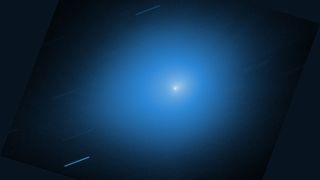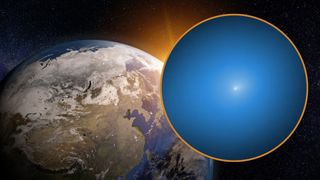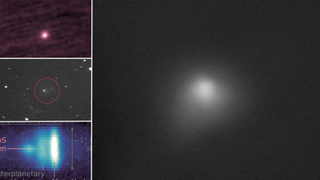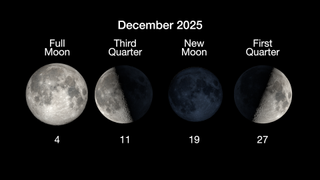Astronomy
Explore Astronomy
Latest about Astronomy

James Webb Space Telescope watches 'Jekyll and Hyde' galaxy shapeshift into a cosmic monster
By Robert Lea published
"Virgil has two personalities, its 'good' side – a typical young galaxy quietly forming stars. But Virgil transforms into the host of a heavily obscured supermassive black hole, pouring out immense quantities of energy."

Latest Comet 3I/ATLAS news: Comet close approach today
By Tariq Malik, Daisy Dobrijevic, Anthony Wood last updated
Friday, Dec. 19, 2025: Your daily feed for the holiday flyby of interstellar comet 3I/ATLAS by Earth.

Farewell, comet 3I/ATLAS! Interstellar visitor heads for the outer solar system after its closest approach to Earth
By Robert Lea published
3I/ATLAS has now made its closest approach to the sun and Earth and is now heading back out toward the outer solar system.

How did interstellar comet 3I/ATLAS capture our imagination in 2025?
By Brett Tingley published
For one, it came down to timing.

What is the moon phase today? Lunar phases 2025
By Tariq Malik, Daisy Dobrijevic last updated
Reference See what moon phase it is tonight and find out when you can see the rest of the moon phases for 2025.

What time will interstellar comet 3I/ATLAS be closest to Earth today?
By Daisy Dobrijevic last updated
NASA JPL pinpoints the moment the interstellar visitor passes closest to our planet.

Watch interstellar comet 3I/ATLAS make its closest approach to Earth in free livestream on Dec. 19 after rain delay
By Daisy Dobrijevic last updated
The livestream will now begin Friday at 11 p.m. EST, Dec. 19 (0400 GMT on Dec. 20), weather permitting, after rain prevented a broadcast on Thursday night.

Astronomers capture 1st direct images of collisions in a nearby star system: 'It's like looking back in time'
By Robert Lea published
"It's like looking back in time in a sense, to that violent period of our solar system when it was less than a billion years old."

Scientists detect X-ray glow from interstellar comet 3I/ATLAS extending 250,000 miles into space
By Samantha Mathewson published
A rare interstellar comet has been caught in X-rays by two space telescopes, revealing how its gases interact with charged particles from the sun as it travels through the inner solar system.
Breaking space news, the latest updates on rocket launches, skywatching events and more!

